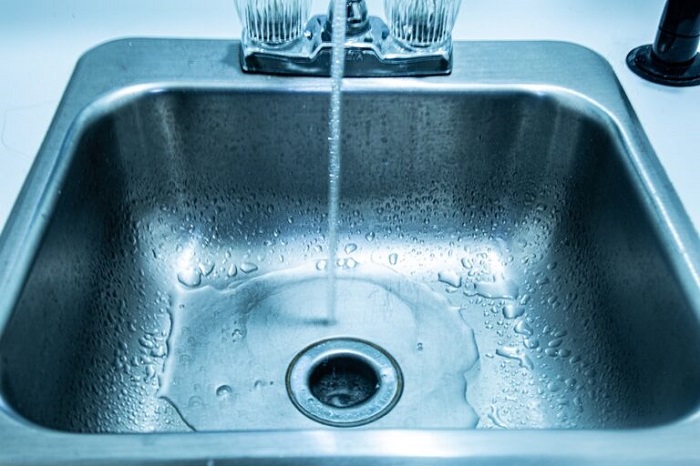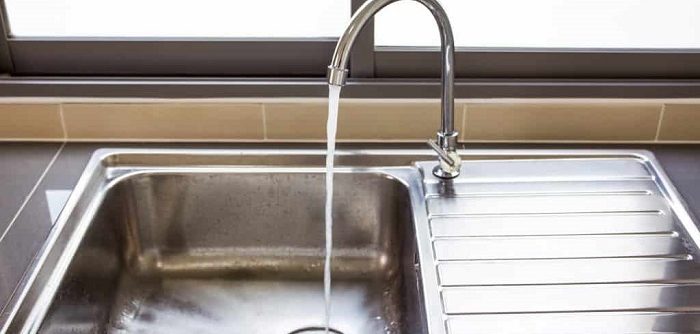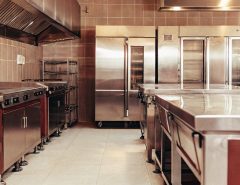When you think of a kitchen sink drain, you probably think of a simple plumbing fixture that keeps your sink and dishes clean. But did you know that the kitchen sink drain can be a serious health hazard? When the drain is clogged or backed up, it can cause flooding and mold. This post discusses what causes the kitchen sink drains slow and gurgles problem and how to fix it.
Why kitchen sink drains slow and gurgles?

It’s true that over time, food will end up in the drain. The trick is to get it out before it causes a problem. To prevent this from happening, you need to remove any food that might be stuck in the drain pipe. This can be done by using a plunger or by using a drain snake.
It’s important to have a drain pipe cleared of any debris before it becomes a problem. This is because some debris can cause the drain to back up and eventually clog the pipe. If you don’t have time to get the pipe cleared, then you can opt for an alternative solution.
False Drain Pipe Installation
A new sink drain can gurgle for many reasons. Some of them are: improper installation of the drain pipe, improper hook up of the drain pipe, incorrect routing of the drain pipe, or a blocked drain pipe. In some cases, the problem is not immediately apparent, but only becomes evident after the installation is complete.
I am not a plumber, but I have a good friend who is. He will be able to tell you whether or not your plumbing needs to be fixed. You should also consider getting a second opinion from a professional before spending thousands of dollars on repairs.
How to Fix a Gurgling Kitchen Sink?
Kitchen sink gurgling is one of the most common problems for homeowners. The solution is simple: check the drain and/or pipes of the kitchen sink. The problem may be something as simple as a clogged drain. If the sink has a gurgling sound, the first place to start is the P-trap.
If you’re hearing a loud gurgling sound coming from the vents in your home, it could be because of a clog in the main vent. To fix this problem, you’ll want to shut off your water to the house first and then call a plumber to fix the problem.
Step 1:
If you find yourself having trouble with your drains, it’s important to first check for leaks in the pipes. If you find any, you can use a small amount of caulk to stop the leak. It’s also important to check for blockages in the pipes. A plunger is a good way to remove blockages. If you find that the blockage is too large for a plunger to remove, you can use a drain snake.
A clogged or broken air admittance valve is a common problem with air conditioners. If your air conditioner has an air admittance valve, then it’s probably time to replace it. The air admittance valve is a small valve that regulates the amount of air that enters the condenser. When it’s clogged, it prevents the air from entering the condenser.
Step 2:
If you are experiencing a clog, try flushing the line first. If that doesn’t work, remove the drain cover and place a bowl or pan below the drain. You’ll need to drain some water into the bowl before you remove the drain cover. Be careful not to pour too much water down the drain. You don’t want to create a big mess or flood your bathroom.
When you’re using your kitchen sink, make sure you don’t put anything down the drain. It can cause clogs and backups, which could lead to health problems, especially if you have kids. Also, make sure you keep your sink clean and avoid putting anything down the drain.
Step 3:
The purpose of the main drain is to carry water from the sump pump to the drainage system. The vent is typically located near the top of the wall where there is an open area of the roof. It is usually located inside of a pipe that is attached to the side of the building.
A clogged sewer line can cause a variety of problems, from an uncomfortable and messy experience to potential flooding. In addition to being dangerous, a clogged sewer line can cause a foul smell in the house, and damage to a home’s foundation, walls, or basement.
In conclusion, you should always do your best to keep your drain system clear. This means you should clean out your pipes and drains regularly. You can use a drain snake to remove any clogs that may be causing your drains to become sluggish. You can also pour a cup of baking soda down the drain and let it sit overnight. The next day, flush your drain with water to ensure that the baking soda works its magic and to help you see if there are any other issues with your plumbing.




